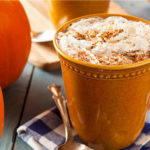
Marketing Food To Millennials Is All The Rage, But Don’t Forget Boomers
Boston University researchers estimate that 3 million baby boomers will live to be 100 years old. So when it comes to marketing food brands, while it’s all the rage to market to millennials right now, it’s also a good idea not to forget boomers just yet — mainly because they’ve got a lot of money.
(More about that in a second.) Once you’ve decided that boomers are an appropriate target, you have to figure out how to market to them without tagging your product or service as “just for old folks”. Fortunately, a lot of the tactics being touted as the way to the heart of a millennial are surprisingly effective with boomers. That’s because today’s boomers have changed and adapted to the world we live in and shouldn’t be confused with ‘retirees’ of 20 or even 10 years ago.
Here’s what you should know about boomers.
There are around 100 million 50+ consumers, controlling 70% of the nation’s wealth, slightly north of $7 trillion, and a lot of it is discretionary income. They spend more in grocery and drug stores, more on luxury travel, more on quality children’s clothing than any other age group. A 2012 Nielsen study reported that boomers account for $230 billion in sales of consumer packaged goods!
Boomers aren’t all the same. For instance, over 60% don’t have kids living at home (1/3 of those because they never had kids), but that means over 30% do still have kids at home, including boomerangs and grandkids. One in 10 children now lives with a grandparent, according to a Pew research report, a share which has risen steadily, with a sharp increase during the recession.

So how have boomers changed over the last few years?
Well, for starters, 90% say they plan to stay in their homes as they age (the “Aging in Place” trend is spawning whole new industries and massive changes in health care, real estate, construction and finance). There’s even an online matching service, Roommates4Boomers.com, to help women find compatible living mates. And boomer-living.com has articles like, “Is moving to be close to kids and grandchildren the right thing?” to help boomers navigate this uncharted territory. Despite the wealth they have amassed as a group, a sizable subset is continuing to work past traditional retirement age, some because their 401k took a beating in the last recession, others because they just aren’t ready to retire. The Brookings Institution finds that 35% of men over 60 are still working, up from 26% in 1969.
Marketing food products to boomers doesn’t have to exclude everyone else.
A recent paper by Ola Mobolade lists 5 principles in targeting millennials: communicate a higher brand purpose; be authentic and transparent; leverage digital and social content; reward loyalty; and reflect diversity beyond just multicultural casting. All of these principles can be utilized to market to a younger target without turning off or excluding boomers. Even if millennials skew brand preference more markedly to a product that shows social responsibility, boomers are certainly not going to be turned off by it! In fact, DemoDirt recently reported that these groups actually have similar attitudes on this point. Among those who say they purchase products that promote social causes consistent with their own values, 31% are boomers and 32% are millennials, while only a quarter are Gen X.
Market to boomers without missing out on everyone else.
Boomers and millennials both clip coupons, and love sales and bargains. Both groups browse, research and shop online. Interestingly, female shoppers in both groups (82% of boomers, 83% of millennials) share their shopping experiences on social outlets, while men don’t.
There are differences, however. Boomers are more likely to visit food-related websites for information, whereas millennials will rely more on social media when researching purchases. Boomers are far more likely to also use print media when gathering information. A Neustar survey showed a sizable number of shoppers 55+ use their smartphone to purchase products online (28%), research products online (32%) and access mobile coupons to redeem in store (30%). While these numbers are lower than the 18-to-35 age group, they still represent significant buying power. Ordering groceries online for home delivery is especially appealing to boomers as they age.
Lisa Joy Rosner, CMO of Neustar, quoted in MarketingSherpa.com, put it like this: “I would say that marketers aren’t reaching out to boomers enough on digital platforms as much as to other demographics. Boomers aren’t blind to the efficiencies of digital channels; marketers just need to engage with boomers in a way that resonates with them.”
For food brand marketers, it’s definitely more complicated to reach boomers than it was when they were younger and there were only three choices: NBC, CBS and ABC. Today’s marketers can’t ignore print, but they need to reach out via digital platforms, too. And messaging that appeals to them on values instead of relying on behavioral and demographic segmentation can avoid the pitfalls of inadvertently turning off other age groups. It may not be easy, but boomers are too big a group, commanding too much spending power, to ignore.
This article originally appeared in SmartBrief on December 2, 2016.






